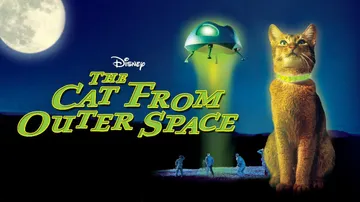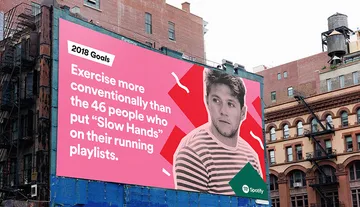Brand Marketing and Direct Marketing in the Age of Subscription

Elyse Kamibayashi, Former Senior Brand Strategist
Article Categories:
Posted on
Why brand marketing may help brands win the subscription wars.
One does not simply watch the film version of Hamilton.
If you’d like to watch Hamilton, you have two options and one of them is illegal. So, one option.
You have to purchase a subscription to Disney+.
This means that along with access to Hamilton, you now have access (whether you like it or not) to every Disney, Pixar, Marvel, and Star Wars movie ever made. Plus the old and new versions of the Parent Trap, the old and new versions of Flubber, and The Cat from Outer Space.

If you’re Disney+, your goal is to acquire subscribers who will not behave the way I did, which was to watch Hamilton and then set a reminder to “Cancel Disney+” at the end of the month. All in all, I logged into my Disney+ account twice — the first time to start my subscription, the second to cancel it.
Okay, but how do you avoid this? Or at least, how do you make sure that subscribers like me are the outliers?
Success in the subscription world means that you’ve managed to build up a subscriber base that is both large and predictable. Your subscribers don’t allow their accounts to languish for a month or two before canceling their subscription. They’re not swayed by the targeted ads from your competitors, and they’ll stick around so long that they forget how much you charge their credit card every month.
So, what can marketers do to help their service or product find success with subscription models?
One approach involves not just doing more of one thing, but also doing less of another — specifically, doing more brand marketing and less direct marketing.
This might come as a surprise. After all, direct marketing has a proven track record of success. It’s used by countless businesses who love it because it's measurable, flexible, and it drives engagement.
To understand why brand marketing is often so effective with subscription models — and why direct marketing may be less effective — we first have to understand how these two approaches work. Or more specifically, what they’re good at.
Let’s start with direct marketing. At its simplest, direct marketing is good at making you do something right away. Or at least, it’s good at making you want to do something right away. It sends you an email, or puts an ad in your feed, telling you that something you want is now, in some way, easier to get. Usually, but not all the time, this has to do with the cost. It doesn’t make you want the thing more — but it does make it pretty much impossible to say no to it.

Now let’s take a look at brand marketing. Brand marketing isn’t great at building urgency, but it does play one heck of a long game. Brand marketing is like the figure in the corner that nobody pays attention to, until he throws off his hood and reveals himself to be Aragorn. And then, before you know it, you’ve got a poster of him on your wall and replicas of the Shards of Narsil on your dresser.

At its core, brand marketing works not by making something easier to get, but by making you want it more. It reminds you why you want this thing. When we look at brands who are particularly good at brand marketing, we see that they base their marketing off of an overarching brand strategy. That strategy positions their product or service as something that speaks to a core truth about who they are and what their audience wants.
For example, Masterclass has a brand strategy that focuses on offering people the chance to “learn from the best.” Does it matter that their instructors aren’t necessarily good teachers? Not really. At the end of the day, some people just want Billy Collins to talk to them about poetry.
Masterclass’s brand marketing reinforces their value prop with an endless stream of glossy video ads that they place in social feeds. The ads show people like Helen Mirren and David Sedaris sitting in a beautifully designed studio, sharing pearls of wisdom to the strains of stirring, orchestral music. Everything about it feels like “the best” — the best studio design, the best lighting, the best editing, the best rugs for goodness’ sake.

Their brand marketing reinforces, over and over again, that you want to sign up for Masterclass because you’ve always wanted to be Annie Leibovitz — and what better way to become Annie Leibovitz than by learning from Annie Leibovitz?
Okay, but, what makes this approach better for a subscription service? Well, because subscription services are about long-term commitment. And as a rule, humans commit to things that they value — not things they feel they can pay less for.
Direct marketing doesn’t just sidestep discussions of value — it can undercut your value proposition. It sends the subtle but unmistakable message that you should only subscribe because right now it’s cheaper. Which means that as soon as something even cheaper comes along, people will bail.
Brand marketing can encourage your audience to subscribe for the right reasons — reasons that will set them up for long-term commitment. And it lays a foundation that you can continue to build on with the content that you create and the features you add.
Spotify, for example, started with a brand strategy (in collaboration with COLLINS) that celebrated the moment we connect with a song — the “burst of emotion” that we let out in a variety of loud, quirky, awkward, and joyful ways. COLLINS’ case study states:
"[Millennials] expect a level of service from each and every single one of their carefully selected products and services. They want to be anticipated, whether they are on a run, studying, or dining with friends. They want an experience that can understand them and deliver as appropriate."
Spotify's brand marketing reinforces this idea with ads that show (hilariously) that they do, in fact, understand their audience — they know and love all of our quirks, and all of the weird, wonderful things that the right song can make us do.


Over the last few years, Spotify has added features like Daily Mixes, Your Summer Rewind, and the always exciting (sometimes embarrassing) “Wrapped” at the end of each year. Every successful decision it has made can be traced back to its strategy, which they then proclaim in their marketing. Spotify has a subscriber base that is loyal because the value they derive from Spotify continues to match (and often exceeds) their expectations.
Okay, so brand marketing is great, but are we saying we can never use direct marketing? Isn’t that a bit extreme?
The truth is that we can use direct marketing — we just have to be intentional about when and how we do so.
Masterclass, for example, ran a “buy one share one for free” promotion in March. It felt timely. Everyone was quarantined, feeling supremely uninspired, and it was a way to build connections with distant friends and family members. It was smart and intentional, and didn’t take the focus away from the beautiful “and THIS is my masterclass” video ads that continued to dominate Instagram feeds.
But let’s be real: it’s hard to ignore the charms of direct marketing. It’s efficient, easily measurable, and it gets people in the door. But if you have a subscription service (or if you’re simply looking at building the lifetime value of your customer base) then what you need is a tool that will help you win the war — not just one battle.
